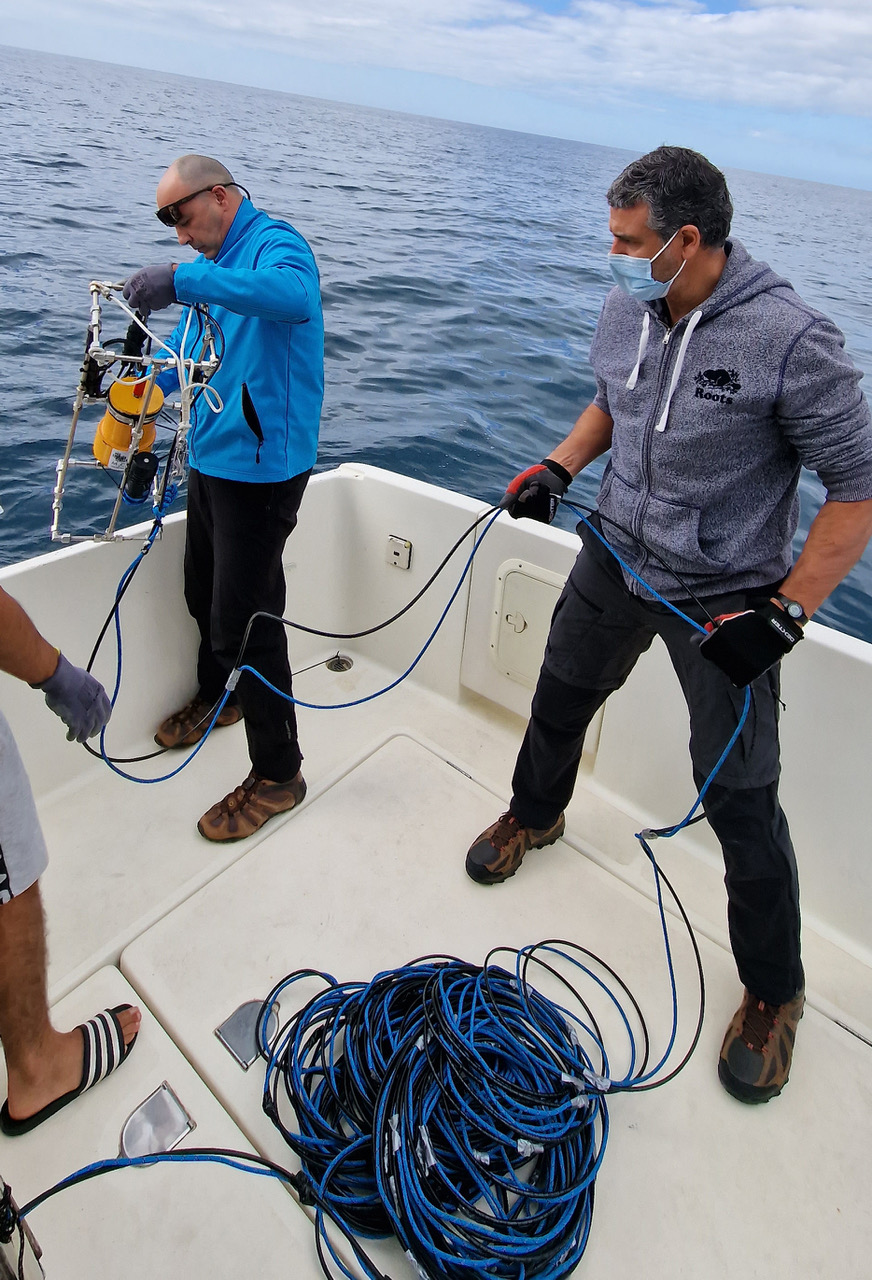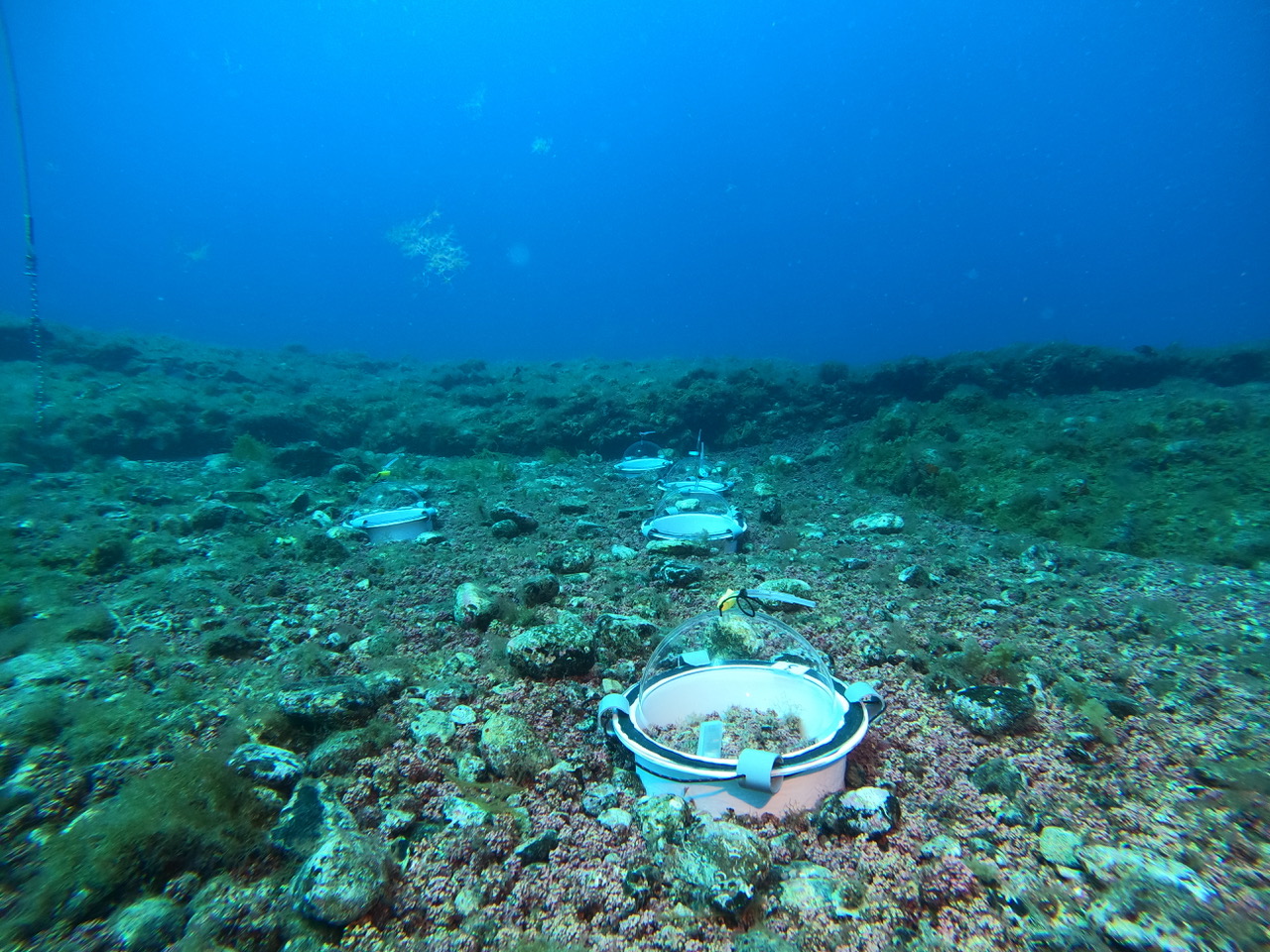The MAC-RODO project, funded by the European program LIFE4BEST, has studied the biodiversity and ecosystem services of rhodolith beds across the Macaronesia for 16 months. The project was led by the Atlantic Biodiversity and Sustainability Association (ABAS), with the collaboration of the Biodiversity and Conservation Group (BIOCON) of the Institute for Research in Sustainable Aquaculture and Marine Ecosystems (ECOAQUA) of the University of Las Palmas de Gran Canaria (ULPGC).
The results obtained in Gran Canaria and Madeira prove that rhodolith beds cover extensive areas of the seabed and have a great potential to sequester carbon, something that could change in the future with seawater increases in the Macaronesia.
Rhodoliths are coralline red algae that grow loosely on the seafloor, forming nodules in the form of "popcorn", and are known to be "ecosystem engineers", that is, they are able to generate a habitat for a multitude of other associated animal and plant species. However, scientific knowledge about them is very scarce. In addition to occupying extensive areas of the coastline, they are often washed-up on beaches by currents and tides, thus contributing to the generation of sand. The skeleton of rhodoliths is formed by calcium carbonate, so they may play an important role in climate change mitigation.
The main aims of MAC-RODO project, an acronym for 'MACaronesian RhODOliths: Ecosystem Functions and Services), were three: The first was to increase basic information on the distribution, biodiversity and ecosystem services of this important marine habitat and its capacity to sequester atmospheric carbon (blue carbon). The second was to assess their vulnerability to global and local anthropogenic impacts such as temperature and pollution, and third, from a communication perspective, to disseminate the ecological and social importance of these ecosystems.

Photo 1: Incubation chambers for in situ respiration experiments on rhodolith bottoms. Photo 2: Diver carrying out in situ experiments in the area of Arguineguín in the south of Gran Canaria.
A total of six scientists were involved in the project, two from ABAS and four from IU-ECOAQUA: Dr. Francisco Otero Ferrer, from ABAS, as principal researcher of the project, Dr. Nestor E. Bosch, also from ABAS, the professor and director of ECOAQUA, Ricardo Haroun, Professor Fernando Tuya, Dr. Fernando Espino and the pre-doctoral researchers Marcial Cosme de Esteban and Sandra Navarro Mayoral, also as part of the university institute.
In the first aim, mapping and survey work was carried out to estimate the area of these rhodolith seabeds on the islands of Gran Canaria and Madeira using side scan sonar, a technology that allows characterizing the type of seafloor and its area. The mapping work was combined with in situ experiments in the Arguineguín area of southern Gran Canaria to quantify the growth and amount of carbon sequestered by these habitats. The results achieved demonstrated that rhodolith beds covered an extensive area in both regions and that the ability of rhodolith seabeds to sequester carbon could change in the future with increasing temperatures.
In Madeira, mapping activities were carried out in the area of the Cabo Girao Marine Natural Park, in collaboration with researchers from AMACO (Madeira Association for Marine Conservation), whose M3C project (Madeira Maërl Mapping and Conservation), also funded by the European LIFE4BEST initiative, is also working for the preservation of these ecosystems. The use of scanning sonar showed a larger area of rhodolith seabeds than previously known data for both archipelagos.
In the second objective, mesocosm experiments were carried out at the Centro de Ciências do Mar facilities (Faro-Portugal), to evaluate the sensitivity of Macaronesian rhodolith seabeds to increases in temperature and nutrients. The results of short-term experiments indicate that the temperature and nutrient treatments had little noticeable effect on the physiology of the main rhodolith species that form extensive fields in Macaronesia, however it cannot be ruled out that greater exposure to these factors has a negative effect on the growth and survival of these organisms.
In the third aim, different dissemination activities were carried out both at the scientific level as well as activities for society in general to disseminate the ecological and social importance of these ecosystems. These included the publication of two scientific articles in international journals, the creation of an information page integrated within the website of the ECOAQUA institute, the dissemination through social networks and the creation of an informative leaflet on rhodolith fields in Macaronesia, that was distributed in diving centers, public libraries, fishermen associations, stores related to maritime activities and events such as the Marine Science Week and the International Sea Fair (FIMAR 2022).
 Fran Otero, from ABAS, and Pedro Neves, from AMACO, at sea with a camera trawl to map rhodoliths in the Cabo Girao Marine Natural Park (Madeira).
Fran Otero, from ABAS, and Pedro Neves, from AMACO, at sea with a camera trawl to map rhodoliths in the Cabo Girao Marine Natural Park (Madeira).
In conclusion, MAC-RODO project has provided relevant information on rhodolith beds of Macaronesia, contributing to the scientific knowledge of this marine habitat and to the identification of its importance for conservation. The results achieved may be useful for future research in the area, as well as for the management and conservation of marine ecosystems in the region.
The complex three-dimensional structure of rhodoliths is used as home by many marine species (crabs, worms, mollusks, etc.). On the other hand, this complexity and the form in which the rhodoliths fit together, enable their habitats to shelter larger species (some with commercial importance, such as fish, octopus, among others) and also used for the attachment of other species of algae. For these reasons, rhodolith fields are considered habitats of high biodiversity importance.
Rhodolith seabeds are subject to different threats, mostly of anthropogenic origin, such as bottom trawling, coastal development, sewage dumping, poor offshore aquaculture practices, anchoring and dredging. These algae are also particularly vulnerable to ocean acidification, which results in the dissolution of their carbonate structure ("their skeleton") and the consequent release of accumulated carbon stocks.
MAC-RODO, which has lasted 16 months, was carried out with approximately 40,000 euros from the European LIFE4BEST program, funded by the European Union's LIFE Environment and Climate Action Program, the French Biodiversity Office (OFB) and the French Development Agency (AFD).
PRESS OFFICE: Beatriz Díaz – beatriz@mandarinacomunicacion.es – 620410871


